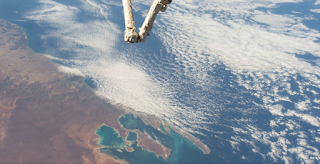Japanese whaling resumes, Whale found dead – death by plastic, Marine Protected Areas yield bounty, New tech map identifies vulnerable marine spots, Right whale populations decline, South Africa announces 20 new marine protected areas and much more…
1. Japanese commercial whaling to resume in July
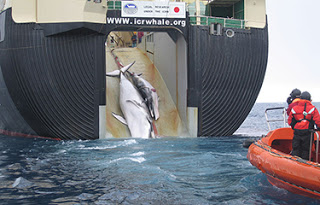 After a 30-year break, Japan will resume commercial whaling in July. Japanese Chief Cabinet Secretary Yoshihide Suga announced on December 26th 2018, the country would withdraw from the International Convention for the Regulation of Whaling (ICRW). The announcement was timed to meet a six-month notification requirement. By beating a January first deadline for notifying the U.S. State Department – which in turn notified the convention’s governing body, the International Whaling Commission (ICW) – Japan is able to resume whaling this July.
After a 30-year break, Japan will resume commercial whaling in July. Japanese Chief Cabinet Secretary Yoshihide Suga announced on December 26th 2018, the country would withdraw from the International Convention for the Regulation of Whaling (ICRW). The announcement was timed to meet a six-month notification requirement. By beating a January first deadline for notifying the U.S. State Department – which in turn notified the convention’s governing body, the International Whaling Commission (ICW) – Japan is able to resume whaling this July.
2. New Documentary Genre – Advocates Change
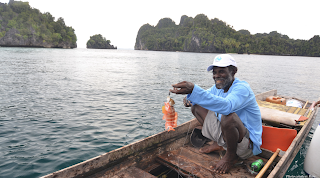 The power of media to educate and to drive people to make a change is undeniable. Conservation icon David Attenborough’s familiar, soothing narration has accompanied nature documentaries for decades, but he brings a new and urgent tone to his latest project, Netflix’s new series “Our Planet.” While Attenborough’s previous projects, Planet Earth and Blue Planet, were windows into the wonders of nature, Our Planet is an alarm bell. If we don’t change our ways, human-driven problems like climate change will leave behind bleached coral and barren oceans.
The power of media to educate and to drive people to make a change is undeniable. Conservation icon David Attenborough’s familiar, soothing narration has accompanied nature documentaries for decades, but he brings a new and urgent tone to his latest project, Netflix’s new series “Our Planet.” While Attenborough’s previous projects, Planet Earth and Blue Planet, were windows into the wonders of nature, Our Planet is an alarm bell. If we don’t change our ways, human-driven problems like climate change will leave behind bleached coral and barren oceans.
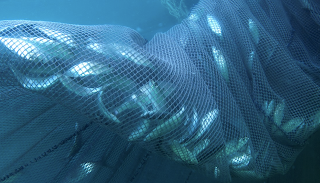
The practice of trawling, one of the most damaging types of fishing, uses large cone-shaped nets to catch fish at the bottom or mid-water of the ocean. These methods are notorious for unintentionally catching turtles, marine mammals and other species besides fish. When trawling nets scrape the bottom of the ocean, they also destroy critical marine habitats and corals. Yet while the practice is destructive, it’s not illegal: We found only 14 percent of the world’s 3,900 MPAs prevent fishing and drilling.
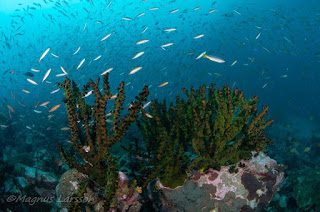
New luxury resort, Awei Pila, demonstrates a commitment to ocean conservation by bringing together a team of experienced divers from across the world, the initiative is placing the focus on clearing the fishing debris from the coral reefs of this archipelago off the south coast of Burma (Myanmar).
When ghost nets and other discarded fishing gear gets caught in the rocks and reef, it ultimately endangers the marine life and suffocates the coral.
———————————————-
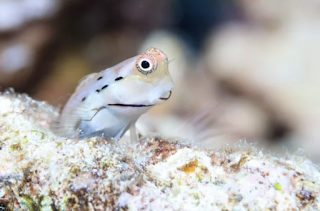 The foundation of massive, flashy and dazzling coral reefs may be a group of fish almost too small to see. New research suggests a group of fish species called cryptobenthics are the fuel that feeds coral reef ecosystems. Most cryptobenthic fish weigh just a fraction of a gram each—but they make up more than half of all fish flesh consumed on reefs each year, says study leader Simon Brandl, a postdoctoral researcher in marine ecology at Simon Fraser University. Although they make up only around 2 percent of the total biomass on a reef at any given moment, they account for 57 percent of the fish biomass consumed within reefs each year, Brandl and his colleagues report in a study published Thursday in Scientific American.
The foundation of massive, flashy and dazzling coral reefs may be a group of fish almost too small to see. New research suggests a group of fish species called cryptobenthics are the fuel that feeds coral reef ecosystems. Most cryptobenthic fish weigh just a fraction of a gram each—but they make up more than half of all fish flesh consumed on reefs each year, says study leader Simon Brandl, a postdoctoral researcher in marine ecology at Simon Fraser University. Although they make up only around 2 percent of the total biomass on a reef at any given moment, they account for 57 percent of the fish biomass consumed within reefs each year, Brandl and his colleagues report in a study published Thursday in Scientific American.
6. Endangered penguins respond rapidly to changes in local fish numbers – scientist will leverage this litmus test
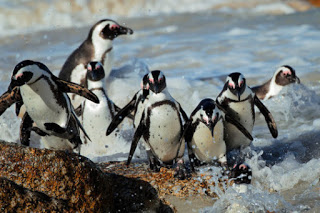 How adult penguins fish and the body condition of their chicks are directly linked to local fish abundance. This information could be an early detection factor alerting fishery management to plummeting stock. Researchers studied an endangered African penguin colony during a rare three-year closure of commercial fisheries around Robben Island, South Africa, and their findings are published today in the Journal of Applied Ecology. Fishing is often considered to be one of the biggest drivers of biodiversity loss in the ocean. It is so widespread that we lack an understanding of the ‘natural’ relationships between marine predators and their prey, and thus the extent to which predators are disrupted by competition from fisheries.
How adult penguins fish and the body condition of their chicks are directly linked to local fish abundance. This information could be an early detection factor alerting fishery management to plummeting stock. Researchers studied an endangered African penguin colony during a rare three-year closure of commercial fisheries around Robben Island, South Africa, and their findings are published today in the Journal of Applied Ecology. Fishing is often considered to be one of the biggest drivers of biodiversity loss in the ocean. It is so widespread that we lack an understanding of the ‘natural’ relationships between marine predators and their prey, and thus the extent to which predators are disrupted by competition from fisheries.
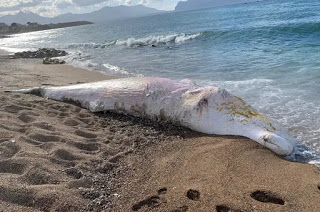
Yet another young whale has been found dead, washed ashore with a belly full of plastic. Greenpeace in Italy shared graphic pictures of a beached sperm whale carcass found on the coast of Sicilia on social media over the weekend. When the whale was cut open, multiple bits of plastic waste were found clogging the young animal’s stomach. It was unclear if the plastic was the cause of death, but it couldn’t be ruled out, said Giorgia Monti, Greenpeace Italia’s campaign manager.
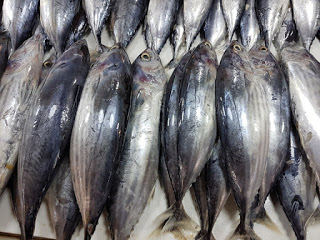 New research finds that, to the contrary, large MPAs can confer benefits on migratory marine species — but only when they are carefully designed, strictly enforced, and integrated with sustainable fisheries management. The study explores whether or not there are any benefits of “targeted spatial protection” measures, including large-scale fisheries closures and marine protected areas (MPAs), for highly migratory species like billfishes (such as swordfish and marlins), pelagic sharks (such as blue, great white, mako, silky, and thresher sharks), and tuna — and highlights ways that spatial protection for migratory pelagic species can be improved.
New research finds that, to the contrary, large MPAs can confer benefits on migratory marine species — but only when they are carefully designed, strictly enforced, and integrated with sustainable fisheries management. The study explores whether or not there are any benefits of “targeted spatial protection” measures, including large-scale fisheries closures and marine protected areas (MPAs), for highly migratory species like billfishes (such as swordfish and marlins), pelagic sharks (such as blue, great white, mako, silky, and thresher sharks), and tuna — and highlights ways that spatial protection for migratory pelagic species can be improved.
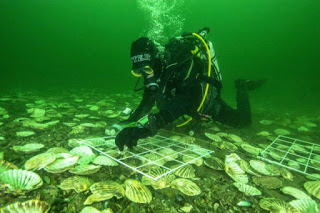 This past May 21-23 in Edinburgh was the Native Oyster Restoration Alliance (NORA) conference. It was attended by marine scientists, conservationists and oyster producers from across the continent. The aim of the event is to develop a blueprint for the reintroduction of beds of native oysters to the waters of 15 countries, reintroducing millions of the shellfish Ostrea edulis to Sweden, France, Germany, England, Wales, Ireland, the Netherlands, Belgium, Italy and Croatia.
This past May 21-23 in Edinburgh was the Native Oyster Restoration Alliance (NORA) conference. It was attended by marine scientists, conservationists and oyster producers from across the continent. The aim of the event is to develop a blueprint for the reintroduction of beds of native oysters to the waters of 15 countries, reintroducing millions of the shellfish Ostrea edulis to Sweden, France, Germany, England, Wales, Ireland, the Netherlands, Belgium, Italy and Croatia.
10. New tech map identifies vulnerable marine spots
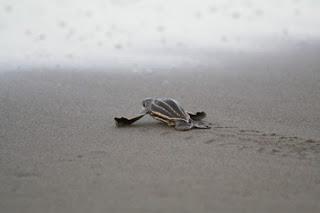 A new paper out of UC Santa Barbara’s Bren School of Environmental Science & Management provides an overview of where ocean biodiversity is most at risk, and how that compares with protected areas. The paper, led by doctoral student Casey O’Hara, appears in the “Journal Conservation Letters.” The results present the first comprehensive map of risks to biodiversity in the ocean. Roughly 1 million plant and animal species face extinction, according to a multinational study by a United Nations-backed panel. But where are these species concentrated, and which regions are most vulnerable?
A new paper out of UC Santa Barbara’s Bren School of Environmental Science & Management provides an overview of where ocean biodiversity is most at risk, and how that compares with protected areas. The paper, led by doctoral student Casey O’Hara, appears in the “Journal Conservation Letters.” The results present the first comprehensive map of risks to biodiversity in the ocean. Roughly 1 million plant and animal species face extinction, according to a multinational study by a United Nations-backed panel. But where are these species concentrated, and which regions are most vulnerable?
11. Unexpected menu item: baby sharks eat birds
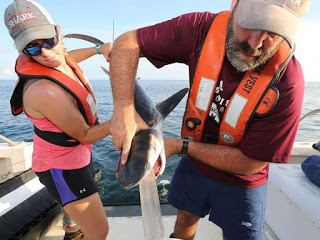 Tiger sharks aren’t exactly picky eaters. To date, scientists have found such oddities as license plates, tires, fishing gear, a chicken coop, and unexploded munitions—not to mention more commonplace prey, including sea turtles, fish, whale carcasses and sea snakes—in the stomachs of these carnivorous apex predators. But a new study published in the journal Ecology details perhaps the most surprising menu option yet: As researchers led by Marcus Drymon of Mississippi State University’s Coastal Research and Extension Center report, an eight-year analysis of 105 tiger sharks’ stomach contents has yielded evidence of 11 land-based bird species’ partially digested remains.
Tiger sharks aren’t exactly picky eaters. To date, scientists have found such oddities as license plates, tires, fishing gear, a chicken coop, and unexploded munitions—not to mention more commonplace prey, including sea turtles, fish, whale carcasses and sea snakes—in the stomachs of these carnivorous apex predators. But a new study published in the journal Ecology details perhaps the most surprising menu option yet: As researchers led by Marcus Drymon of Mississippi State University’s Coastal Research and Extension Center report, an eight-year analysis of 105 tiger sharks’ stomach contents has yielded evidence of 11 land-based bird species’ partially digested remains.
Read more from “The Smithsonian”
and
Read more from primary source
12. Thirteenth dead gray whale washes up in Northern California
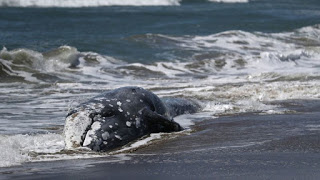 The carcass of another gray whale has washed ashore in Northern California, marking the 13th dead whale found in the Bay Area this year. The whale was found Thursday afternoon at Point Reyes National Seashore near Limantour Beach. The death is the latest in a series of grays — the most frequently seen whale in California — found dead or dying. More than 30 gray whale carcasses have been spotted along the West Coast since January, the most for this time of year since 2000, when 86 whales died. Dozens more have shown signs of malnutrition, and sightings of mother-calf pairs have steeply declined.
The carcass of another gray whale has washed ashore in Northern California, marking the 13th dead whale found in the Bay Area this year. The whale was found Thursday afternoon at Point Reyes National Seashore near Limantour Beach. The death is the latest in a series of grays — the most frequently seen whale in California — found dead or dying. More than 30 gray whale carcasses have been spotted along the West Coast since January, the most for this time of year since 2000, when 86 whales died. Dozens more have shown signs of malnutrition, and sightings of mother-calf pairs have steeply declined.
Editor’s Note: Gray Whale deaths are high this year in California. The suspected cause is malnutrition. Perhaps a linkage to zooplankton response to climate change affecting krill, the whales’ food?
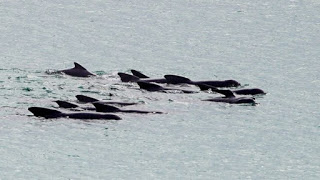
Concerns have been raised about two pods of pilot whales in Orkney, Scotland which are in danger of beaching themselves. The two groups are off the islands of Stronsay and Sanday and are being closely monitored in case they need help. The pilot whales were first spotted on Saturday. About 12 animals were seen close into the shore in St Catherine’s Bay on Stronsay. One of the whales appeared to be either injured or in distress. A team from the British Divers Marine Life Rescue (BDMLR) charity have been standing by in case the animals beach.
14. Right whale population decline linked to ocean warming
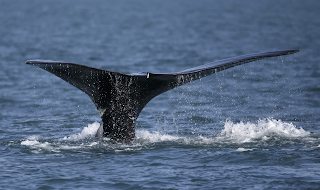 The endangered North Atlantic right whale faces increased odds because its main food supply has shifted due to ocean warming, according to new research. Scientists have been searching for an explanation for a precipitous decline in the North Atlantic right whale population, which has dropped from 482 in 2010 to about 411 today. A paper by 17 authors from the US, Canada and Norway, published this month in the journal Oceanography, links an influx of warm water in 2010 to a reduction in the whales’ key food supply, Calanus finmarchicus, a small crustacean, in the Gulf of Maine, the area off the US coast in which the whales spend their summers.
The endangered North Atlantic right whale faces increased odds because its main food supply has shifted due to ocean warming, according to new research. Scientists have been searching for an explanation for a precipitous decline in the North Atlantic right whale population, which has dropped from 482 in 2010 to about 411 today. A paper by 17 authors from the US, Canada and Norway, published this month in the journal Oceanography, links an influx of warm water in 2010 to a reduction in the whales’ key food supply, Calanus finmarchicus, a small crustacean, in the Gulf of Maine, the area off the US coast in which the whales spend their summers.
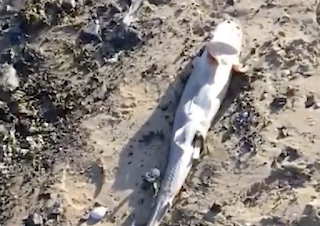 Up to one hundred sharks washed up dead on a beach in Wales. A video posted on Facebook showed the sharks strewn across the beach in Carmarthenshire, Wales, with the woman who filmed the clip estimating around 100 dead fish on the shore. It is believed fishermen illegally removed the dorsal fins of some of the animals before throwing them back into the water, leaving them unable to swim, reports Wales Online. The woman who filmed the scene on the beach said: “Such a sad, wasteful sight. I stopped counting in the end as every wave brought more bodies.
Up to one hundred sharks washed up dead on a beach in Wales. A video posted on Facebook showed the sharks strewn across the beach in Carmarthenshire, Wales, with the woman who filmed the clip estimating around 100 dead fish on the shore. It is believed fishermen illegally removed the dorsal fins of some of the animals before throwing them back into the water, leaving them unable to swim, reports Wales Online. The woman who filmed the scene on the beach said: “Such a sad, wasteful sight. I stopped counting in the end as every wave brought more bodies.
16. Climate change link to puffin deaths
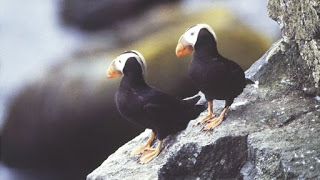 Climate change played a role in the deaths of thousands of puffins in Alaska, according to a study. Scientists believe the birds starved to death when the fish they eat migrated north with rising sea temperatures. The bodies of dead, emaciated puffins began washing up on beaches on Saint Paul Island in autumn 2016. Up to 9,000 puffins and other seabirds died over the course of a few months, US scientists say.
Climate change played a role in the deaths of thousands of puffins in Alaska, according to a study. Scientists believe the birds starved to death when the fish they eat migrated north with rising sea temperatures. The bodies of dead, emaciated puffins began washing up on beaches on Saint Paul Island in autumn 2016. Up to 9,000 puffins and other seabirds died over the course of a few months, US scientists say.
17. Scientists discover rare, ‘undisturbed’ pockets of seawater from the last ice age
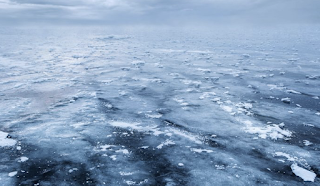 Scientists have discovered a ‘unique archive’ of ocean water that still exists virtually undisturbed from the last Ice Age some 20,000 years ago. Palaeoceanography – which investigates the makeup of ancient oceans lost to history – invariably relies on proxy methods, since such bodies of water have inevitably long since disappeared. But if you have the right boat and drill, it seems you can sometimes tap vanished oceans directly at the source – the next best thing to having a time machine. That’s what a team led by geochemist Clara Blättler from the University of Chicago found while on board the research vessel JOIDES Resolution during an expedition in the Indian Ocean.
Scientists have discovered a ‘unique archive’ of ocean water that still exists virtually undisturbed from the last Ice Age some 20,000 years ago. Palaeoceanography – which investigates the makeup of ancient oceans lost to history – invariably relies on proxy methods, since such bodies of water have inevitably long since disappeared. But if you have the right boat and drill, it seems you can sometimes tap vanished oceans directly at the source – the next best thing to having a time machine. That’s what a team led by geochemist Clara Blättler from the University of Chicago found while on board the research vessel JOIDES Resolution during an expedition in the Indian Ocean.
An international team of scientists has unearthed ancient rock samples from the seabed near Laxmi Basin located on the western margin of the Indian continental plate. An analysis of these samples shows that the evolution of the northern Indian Ocean was far more complex than previously thought. The tectonic evolution of Laxmi Basin has been a subject of intense study for over two decades. Scientists have been using geo-dynamic models to describe it as they did not have access to any physical rock samples buried in the deep ocean floor. The Laxmi Basin is a 300 km wide, marginal depression enclosed by the Indian continental shelf and the Laxmi Ridge on either side.
19. South Africa announces twenty new marine protected areas
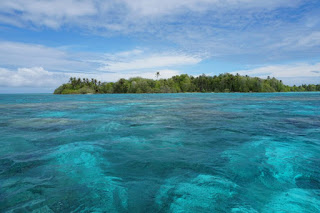 The South African, Department of Environmental Affairs (DEA) officially declared 20 marine protected areas (MPAs) in South Africa last week. The department said in a statement on Monday that the declaration of these MPAs was similar to an insurance policy for the benefit of the current and future generations. The network of MPAs will increase the spatial protection of South Africa’s ocean environment from the current 0.4% to 5.4%, providing protection to 90% of habitat types.
The South African, Department of Environmental Affairs (DEA) officially declared 20 marine protected areas (MPAs) in South Africa last week. The department said in a statement on Monday that the declaration of these MPAs was similar to an insurance policy for the benefit of the current and future generations. The network of MPAs will increase the spatial protection of South Africa’s ocean environment from the current 0.4% to 5.4%, providing protection to 90% of habitat types.
20. Can blue finance save the oceans?
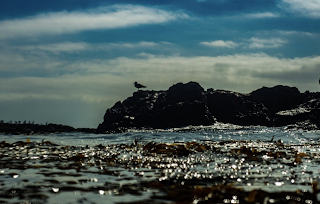 Conservation could be on the verge of a blue revolution. This year there is growing talk about using entrepreneurial finance to capture atmospheric carbon in revived marine and coastal ecosystems such as coral reefs, mangroves, salt marshes, and sea grasses. Conservationists call it “blue carbon”. There is increasing scientific conviction that blue carbon is one of the cheapest options for carbon capture. And that capturing carbon in coastal ecosystems brings with it a host of other ecological, economic and social benefits, from improved fisheries and richer tourism experiences to protection against rising tides and lethal tropical cyclones.
Conservation could be on the verge of a blue revolution. This year there is growing talk about using entrepreneurial finance to capture atmospheric carbon in revived marine and coastal ecosystems such as coral reefs, mangroves, salt marshes, and sea grasses. Conservationists call it “blue carbon”. There is increasing scientific conviction that blue carbon is one of the cheapest options for carbon capture. And that capturing carbon in coastal ecosystems brings with it a host of other ecological, economic and social benefits, from improved fisheries and richer tourism experiences to protection against rising tides and lethal tropical cyclones.
Read more from “Dialogo Chino”
Sea Save Foundation is committed to raising awareness of marine conservation. The Week in Review is a team effort produced by the Sea Save staff to provide a weekly summary of the latest in marine research, policy, and news

